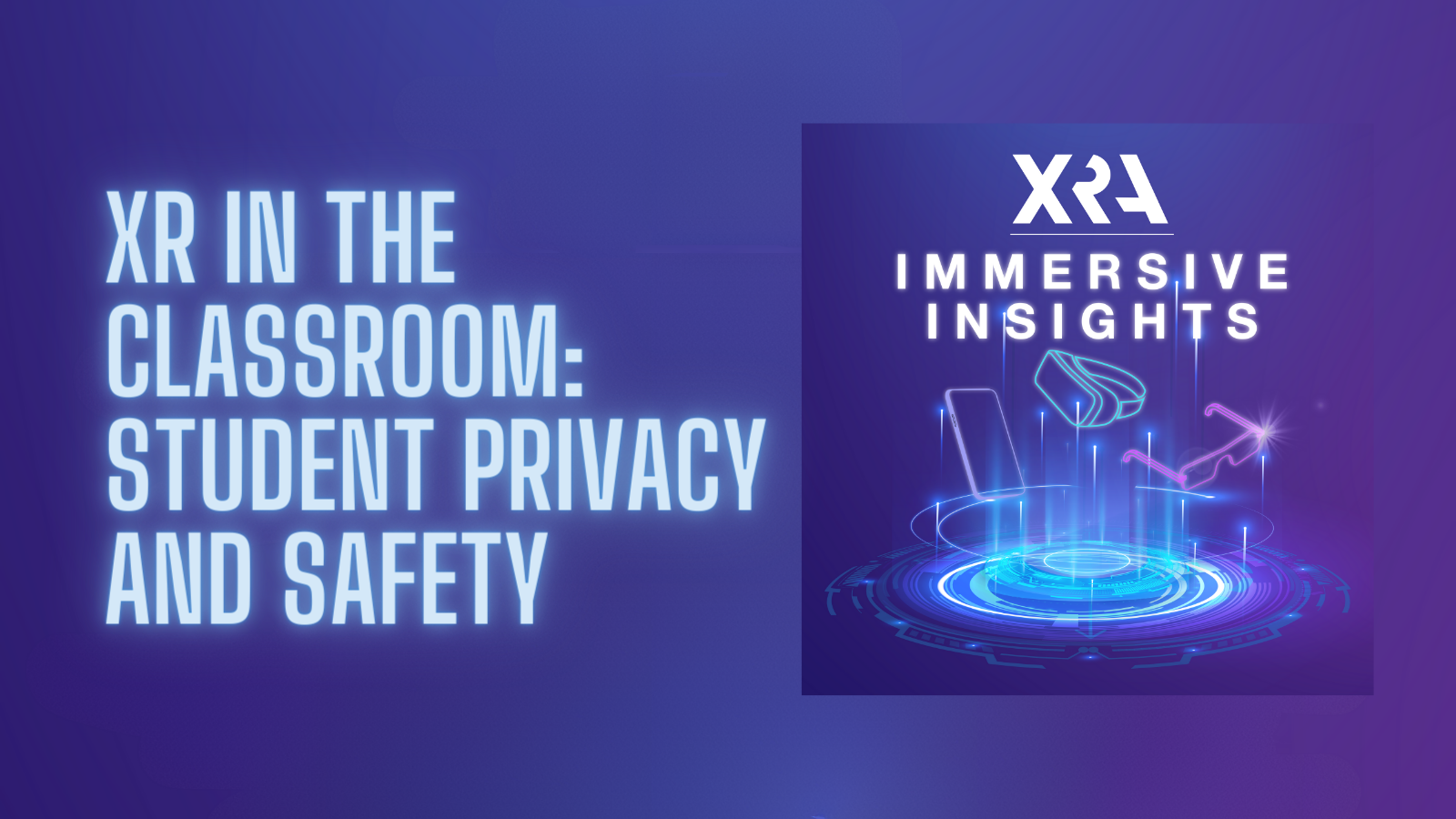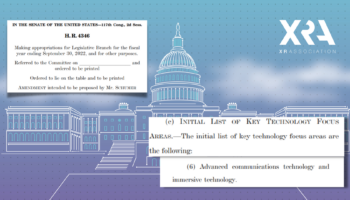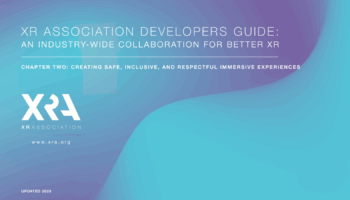Washington, D.C. – The latest episode of Immersive Insights: XR in the Classroom, Student Privacy and Safety is now available for listening on all major streaming platforms. XRA’s Senior Vice President of Research and Best Practices, Stephanie Montgomery, is joined by Harvey Wright, Seattle Public Schools Curriculum Specialist, and Melissa Oldrin, Senior Product Manager of Education at Unity. In this episode, they discuss student data privacy issues and considerations for physical and emotional safety for students and teachers. They also discuss practical application in the classroom and what the future of security and privacy for students might look like.
As the group dove into student safety and privacy, Wright addressed the value of safety guidelines and procedures for ensuring students feel safe and comfortable when they put a headset on and understanding the procedures in place.
“I think it’s really important that you take the time and you actually focus on onboarding your students as users. So, making sure that before anybody puts a headset on, you’ve really established some clear guidelines,” said Wright. “Safe use and unpacking what safe use means, and some of that actually includes how you interact with students who are in an immersive experience because they aren’t necessarily feeling safe when they can’t see the world or the environment around them. So making sure that there are protocols in place for how we support users in our classroom as part of a school community is really critical so that students are going to feel like there’s sufficient trust that they’re going to allow themselves to be in an immersive environment and have the experience that they’re meant to have.”
Oldrin discussed the benefits to XR implementation in the classroom and how immersive technology enhances the learning experience for students and teachers.
“We can categorize the VR classroom implementation into two buckets. I like to think of them as students who create VR experiences or XR experiences, they’re learning developer skills, becoming the creators, not just the consumers,” said Oldrin. “They’re learning the processes, the workflows, the pro tech tools, the computer science, all that goes along with being an XR content creator; and then two, there’s the consumption of XR content and those experiences that augment their subject learning area might support their unique needs and just bring a sense of magic into the classroom.”
Listeners can tune into Immersive Insights on Spotify, Apple Podcasts, Google Podcasts, and TuneIn to learn about considerations for students’ safety and privacy in immersive technology.





